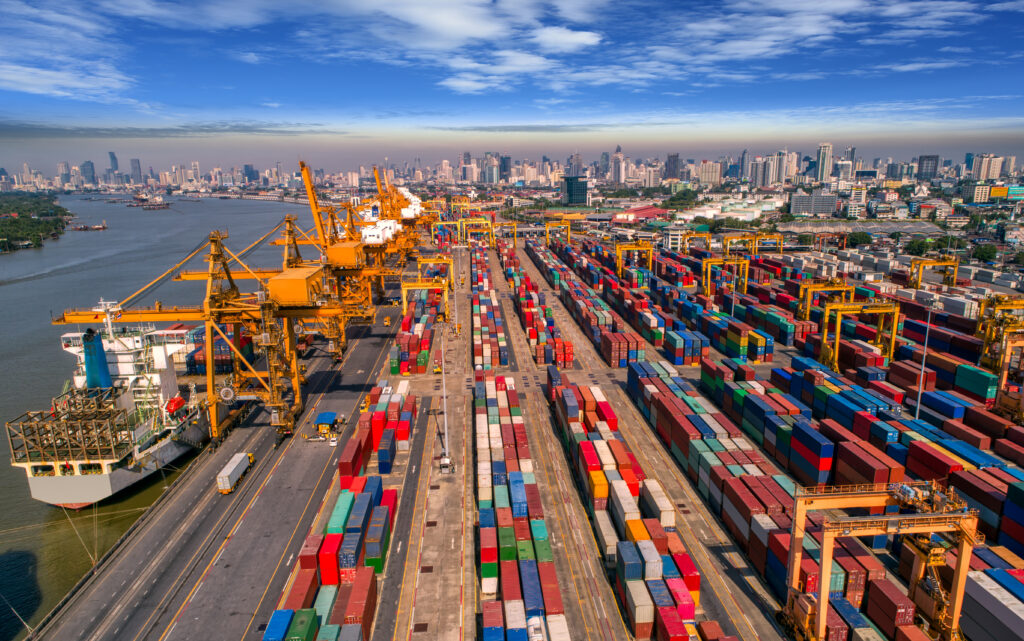
CTPAT Inspection Compliance Basics
What is CTPAT?
The Customs Trade Partnership Against Terrorism (CTPAT) is a voluntary, government-business initiative led by U.S. Customs and Border Protection (CBP). It aims to strengthen global supply chain security and ensure the integrity of goods entering the United States. The purpose of CTPAT is to encourage companies involved in the international supply chain to take proactive measures to follow CTPAT requirements to safeguard their operations and prevent the use of their supply chains for illegal activities such as smuggling or terrorism.
Is CTPAT Mandatory?
Although CTPAT itself is not mandatory, participation can make it easier to comply with related security initiatives. For example, CTPAT aligns with other programs like the Automated Commercial Environment (ACE) and Importer Security Filing (ISF), both of which are mandatory for certain imports. CTPAT is open to U.S.-based companies involved in the import/export process, including importers, exporters, manufacturers, carriers, consolidators, logistics providers, etc.
Can Participation Benefit My Company?
Participation in CTPAT and adherence to CTPAT requirements demonstrate a company’s commitment to secure trade and position it as a trusted partner in international commerce. Reduced inspection rates and expedited shipment processing can lower the risk of delays, and CTPAT certification can also provide a competitive edge, as many business partners prefer working with certified entities.
Who Should Consider Joining CTPAT?
For companies heavily reliant on global trade, the program can minimize disruptions and build trust within the industry. Carriers, consolidators, and logistics providers managing complex supply chains can often benefit from CTPAT membership, and importers and exporters who frequently deal with U.S. Customs are especially good candidates for membership. In addition, manufacturers can participate in CTPAT to enhance their supply chain security measures. However, if a business does not regularly interact with U.S. Customs or manage high-value or high-risk goods, the advantages of joining CTPAT may be less tangible.
What Are Some CTPAT Requirements For Members?
There are three broad areas of focus for CTPAT members: risk assessment, security measures and validation. Participants are required to conduct comprehensive risk assessments of their supply chain to identify and address potential security vulnerabilities. Companies must also meet or exceed a set of security standards that cover areas such as physical security, personnel security, procedural security, IT security, and education/training. The U.S. Customs and Border Protection may also conduct periodic validations of participating companies to ensure CTPAT compliance and to evaluate the effectiveness of implemented security measures.
What Types Of Inspections Are Required Of CTPAT Members?
To support CTPAT compliance with the program’s supply chain security requirements, members are expected to conduct several types of regular inspections. These inspections are designed to identify and mitigate potential risks across the supply chain, ensuring the integrity of shipments and compliance with U.S. Customs and Border Protection guidelines.
1. Container and Trailer Inspections
CTPAT members must inspect all containers and trailers before loading or unloading to ensure they are free from tampering or unauthorized access. This process includes:
- Checking the integrity of container and trailer structures, including doors, locks, and seals.
- Ensuring seals are intact and match shipping documentation.
- Examining for hidden compartments or any signs of tampering.
- There are recommended inspection points specific to a container or a trailer.
2. Seal Verification
Seals play a critical role in supply chain security. Members must ensure the use of high-security seals that meet or exceed ISO 17712 standards. Each seal’s integrity must be checked before and after transit, and the seal number must be documented at every stage of the supply chain to prevent tampering.
3. Physical Facility Inspections
Regular inspections of warehouses, distribution centers, and other facilities are essential to maintain physical security. These inspections should focus on:
- Perimeter security, such as fences, gates, and barriers.
- Lighting and surveillance systems to monitor and deter unauthorized access.
- Access controls, ensuring only authorized personnel can enter restricted areas.
4. Employee and Visitor Inspections
CTPAT members must implement measures to ensure employees and visitors adhere to security protocols. Inspections may include:
- Screening of employees and contractors to verify backgrounds and authorization credentials.
- Monitoring and logging visitor access, including verifying identification and issuing temporary badges or escorts.
5. Cargo Inspections
All cargo should be inspected during loading and unloading to ensure there are no unauthorized items or signs of tampering. This includes verifying the cargo matches the shipping documents, checking packaging integrity, and ensuring compliance with security protocols.
6. Supply Chain Partner Inspections
CTPAT requires members to work with trusted supply chain partners. Members must inspect and monitor their partners’ compliance with security standards through:
- Regular risk assessments of suppliers, carriers, and other third parties.
- Site visits and audits of high-risk partners or those with weaker security protocols.
7. Cybersecurity Inspections
Digital threats are an increasing concern in supply chain security. Members must inspect and evaluate their IT systems to ensure compliance with cybersecurity standards, focusing on data encryption, network protection, and secure communication channels.
Enhancing CTPAT Efficiency and Accuracy With Digital Tools
Not surprisingly, CTPAT members must also maintain comprehensive documentation and records to demonstrate compliance with CTPAT minimum security criteria. This documentation is critical during validations, audits, and day-to-day operations. Some of the most challenging documentation requirements come with the container and vehicle inspections, cargo inspections and visitor tracking due to the fact that these activities are frequent and often require participation or are conducted by frontline personnel with varied levels of experience and skills.
Digital technologies can play an important role in helping companies successfully achieve and maintain CTPAT compliance. Enabling frontline workers with mobile access to digital inspections helps upskill workers and ensures that standardized, compliant inspections are carried out efficiently and accurately. Inspection data can be automatically captured, including images and video, to ensure the thorough documentation of security protocols. Digitalized data not only simplifies validations and audits, it also demonstrates the commitment of the participating member and boosts the impact of their CTPAT efforts.
